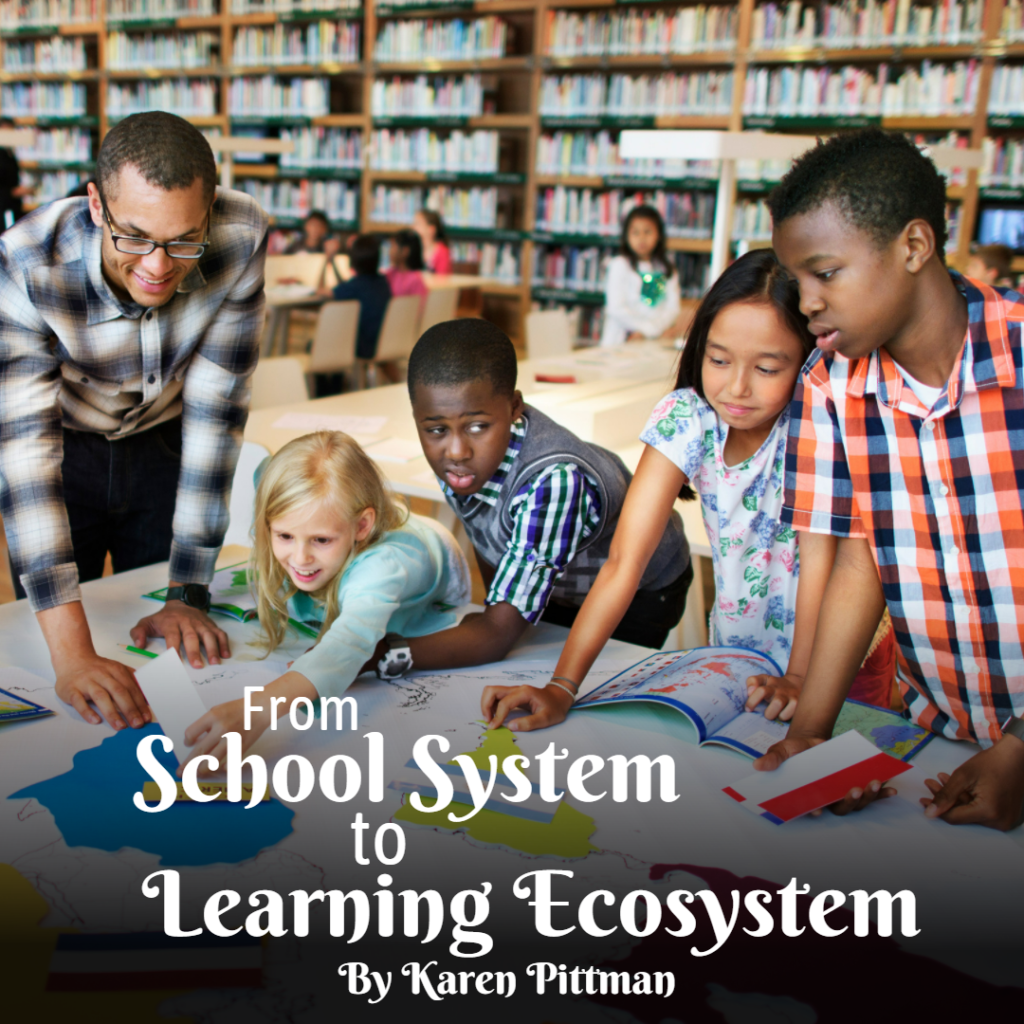
Exploring the space in between formal & flexible
I haven’t met Thomas Arnett, but I truly appreciate the way he thinks. This is the second of what I expect will be a series of blogs that comment directly on his provocative posts. In his first post, he introduced the concept of integrated and non-integrated systems, bigger concepts that help us understand why the architecture of schools is so different from, and often incompatible with, the architecture of community learning ecosystems. In his second post, he puts out a bold challenge to learning ecosystems.
“Right now, learning ecosystems offer flexibility and customizability at the expense of basic functionality and reliability. Over time, learning ecosystems will need to improve on functionality and reliability in order to become attractive alternatives to schooling.”
I absolutely agree with the intent of Arnett’s argument. It is the phrasing that is problematic.
Arnett is correct that learning ecosystems that are formally tethered to school systems (e.g., Louisiana’s Supplemental Course Academy and New Hampshire’s Virtual Learning Charter School) in ways that allow students to get credit for learning outside of the traditional classroom are not widely available. But broadening the net, even a bit, surfaces many, many examples of learning ecosystems that have tackled the functionality and reliability goals. These examples are often overlooked as they are not tethered to or attempting to stand in for school systems.
Community-based youth organizations, more commonly referred to as after-school, out-of-school, or youth development programs, were not designed to be alternatives to school. But they are well established, highly attractive complements and supplements to school that are heavily used by families and deeply appreciated by teachers. They not only fill the non-school hours when parents are working, they provide flexible, interest driven content and opportunities to build differently structured relationships and opportunities to build and use skills. The Afterschool Alliances most recent America After 3pm study notes that parents see immense benefits in afterschool programs as their children interact with peers and build social skills (90%), engage in STEM learning opportunities (73%), take part in physical activity (85%) and engage with knowledgeable and caring staff (89%).
Large national youth development organizations (e.g., Boys and Girls Clubs, Girls Inc, 4H, YMCA, and Camp Fire) are integrated systems that, while not as bureaucratic as school systems, set quality standards, accredit affiliates, distribute resources, create program curricula, provide professional development, and track success. The difference is that they do this at the national level to increase functionality and reliability within their brands across the country. Locally, their affiliates are most often part of non-integrated ecosystems of organizations that often compete for kids and funding by emphasizing their unique differences.
In many communities, however, these local affiliates have come together with other local organizations to create visible, sustainable infrastructure that allows them to operate and present as a system that can negotiate to meet community-level demands for services and outcomes, receiving consolidated resources in return. These systems, called out-of-school time (OST) networks or intermediaries, provide many of the benefits of functionality and reliability for parents that Arnett outlines, focusing primarily on the non-school hours. At their best, they have built functionality and reliability sufficient to represent their members in system-level partnerships with school and other public systems while simultaneously protecting the flexibility and customization embodied in the goals of their network members and valued by families.
Consider The Opportunity Project, the OST intermediary in Tulsa, Oklahoma. The Opportunity Project provides professional development, quality standards and continuous improvement supports, data tracking systems, and funding opportunities for local (and national affiliate) programs. They also provide models for connected and aligned support with the school district including aligned framing and practices in social and emotional learning. During and post pandemic, they have been deeply connected in efforts to ensure young people are garnering the support they need in all aspects of their learning and development – supporting providers in building collaborative learning hubs during virtual learning, supporting robust-city wide summer learning programs and providing a system by which parents can find them, coordinating meal and resource delivery, and more.
Arnett notes that, in business, there is often a tipping point where the products associated with the non-integrated ecosystem that offers flexibility and customization (e.g., Microsoft Windows) is functioning well enough and reliably enough that it becomes preferred to those of the fully integrated (e.g., Apple). I cannot envision a scenario in which non-integrated OST systems could be a viable threat to schools for most families, even for families that are deeply dissatisfied with their quality. But I can imagine ways in which OST systems could become scaled enough and reliable enough to challenge the choke hold schools now have on the definition of learning and the mechanisms used to track and count learning progress.
For the answer to Arnett’s question “can learning ecosystems work for all learners?” to be yes, it is necessary to not only understand the fundamental difference between integrated and non-integrated systems that dwarf the potential of school-community partnerships. It behooves us to also examine the myriad of definitional biases associated with the term “formal”. We will need different definitions of learning, learners, and learner-centered education, fundamentally different ways to assess learning environment quality learner progress, and different ways to assign credit to students and educators. Incentivizing these loosely connected local organizations to design an architecture that makes them more functional and reliable as a group that can deliver against the narrow goals and strategies that define public education is not the answer. And, to their credit, many national organizations will not take the bait. I don’t have the alliterative word that fits between flexible and formal. But we need one if we’re going to get both systems working toward a new community-wide architecture that balances the four pillars: functionality, reliability, flexibility, and customization.
Again, in my mind, the key to this balancing act is empowering and connecting those doing the work each day with young people and in communities to lift up what they each do best and consider how they can redesign together.
I’m reflecting on the third installment now. Stay tuned.





No comment yet, add your voice below!